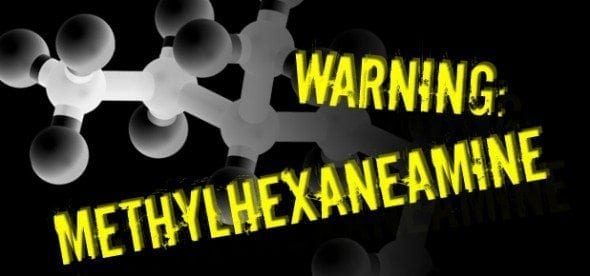Methylhexanamine
Educating our athletes on medical matters and prohibited substances can be very difficult in the emergency department setting.
The Australian Sports Anti-Doping Authority (ASADA) has developed an e-Learning initiative as an effective anti-doping education tool for the Australian sporting community. ASADA e-Learning is easy to use and free.
This education initiative complements the release of the World Anti-Doping Agency (WADA) 2011 Prohibited Drug list. This list can be accessed as an online form (Check your Substances); as a PDF download or as a fantastic free iPhone application to assist practitioners in making the right choices when managing elite athletes.
Keeping ‘clean’ can be an arduous task for even the most vigilant of athletes as exemplified by the methylhexaneamine storm of 2010. Australian athletes were advised to carefully consider their use of supplements following nine positive Australian test results for the prohibited stimulant. Methylhexaneamine was placed on the WADA Prohibited List in 2010 and is classed as a Non Specified Stimulant prohibited in-competition only. Sanctions involving this substance start at two-years.
Methylhexaneamine C7H17N was originally intended to be used as a nasal decongestant but in recent times it has found its way into dietary supplements marketed with thermogenic or stimulant properties. It can certainly be a tricky substance to locate in the ‘ingredients’ section of over the counter (OTC) energy products and while it is banned in sport, it is still legal in dietary supplements – making it even more tricky to monitor…but as ASADA states
Athletes need to be aware that, under the policy of strict liability, they are responsible for any substance found in their body. Athletes using supplements do so at their own risk and, because of supplement manufacturing processes can lead to their contents varying from batch to batch, ASADA cannot advise if supplements contain prohibited substances.
What is it?
- Methylhexaneamine is a simple aliphatic amine and vasoconstrictor that can be administered by inhalation to the nasal mucosa to exert its effect as a nasal decongestant, as well as treatment for hypertrophied or hyperplasic oral tissues
- Although intended by Eli Lilly (1971) to be used as a nasal decongestant, methylhexaneamine has been marketed by certain companies as a dietary supplement in combination with caffeine and other ingredients, under trade names such as Geranamine and Floradrene, to be used as an OTC thermogenic or general purpose stimulant. [Reference]
- Methylhexaneamine itself has not been studied intensively but its stimulant effects on the CNS are less than that of the related compounds amphetamine and ephedrine
- May be associated with cerebral haemorrhage
Where is it found?
- ‘Party Pills’ such as BZP contain DMAA (methylhexaneamine) and were, until recently available in New Zealand [Reference]
- Methylhexaneamine is also a constituent of flower (geranium) oil, sold as an integral component of nutritional supplements. It is technically correct to say that methylhexaneamine is a dietary supplement, as it is a component of the oil from Pelargonium graveolens, which is approved for use in food. Methylhexaneamine has been demonstrated to comprise 0.66 – 1% of geranium oil, a similar compound to plant ratio as many other commonly available herbs.
Positive testing history
- Methylhexaneamine has been reported in a number of doping cases this year including two at the 2010 Commonwealth Games in Delhi, one involving Nigerian athlete Damola Osayemi who was stripped of her gold medal in the 100m after methylhexaneamine was found in her sample. Samuel Okon, also from Nigeria and who finished sixth in the 110m hurdles, tested positive for the drug a few days later.
- In October 2010, nine Australian athletes have been found by Australian Sports Anti-doping Authority to have tested positive for the substance. These players may include NRL and AFL players. [Reference]
- Portuguese cyclists Rui and Mario Costa tested positive for Methylhexaneamine during the Portuguese National Championship in June 2010.
- In November 2010 two South African rugby union players, Chiliboy Ralepelle and Bjorn Basson, were found to have tested positive for the substance on their annual tour of the Northern Hemisphere, and were immediately sent home from the tour by the South African Rugby Union, although it is possible that the players may have ingested the substance inadvertently in the form of medication for flu symptoms [Reference]
Alternate Names:
Methylhexaneamine; Methylhexanamine; DMAA (dimethylamylamine); Geranamine; Forthane; Forthan; Floradrene; shizandol A; Floradrene jack3d; 2-hexanamine, 4-methyl-; 2-hexanamine, 4-methyl- (9CI); 4-methyl-2-hexanamine; 1,3-dimethylamylamine; 4-Methylhexan-2-amine; 1,3-dimethylpentylamine; 2-amino-4-methylhexane; Pentylamine, 1, 3-dimethyl-.4-methyl-2-hexanamine; 4-methyl-2-hexylamine; 2-amino-4-methylhexane; 1,3-dimethylamylamine; 1,3-dimethylpentylamine; 2-Hexanamine, 4-methyl- (9CI)


